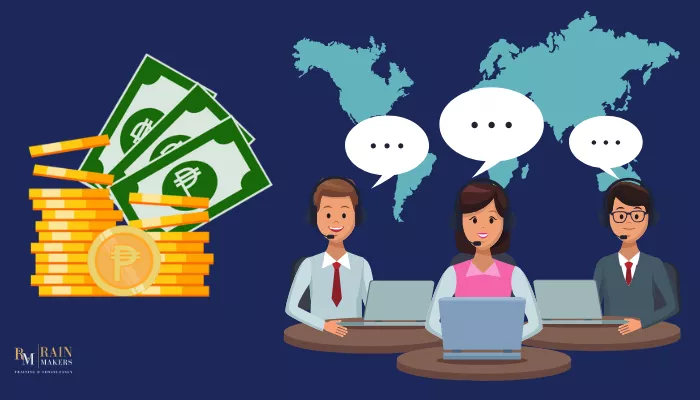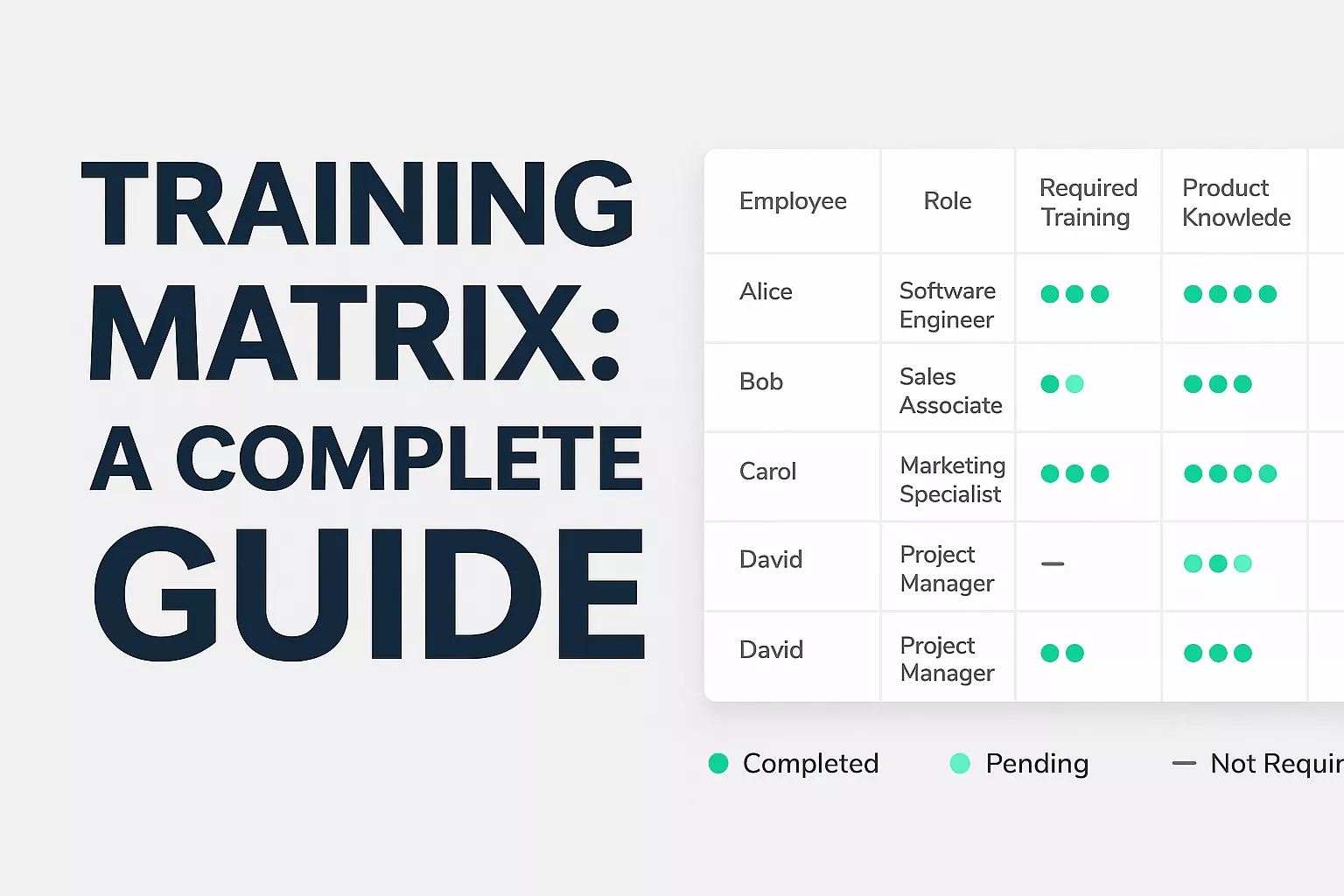by Venchito Tampon | Last Updated on April 22, 2025
How Much Does Customer Service Training Cost in the Philippines in 2025?
Customer service training prices Philippines can range from ₱1,500 to ₱15,000 per participant, per day for public or open-enrollment programs. For in-house or company-exclusive training, rates start from ₱50,000 and can go up to ₱250,000 per session, depending on the program’s depth, duration, and customization level.
Key Factors That Affect Customer Service Training Costs
The cost of customer service training in the Philippines is not fixed. It depends on seven major factors, including:
- Industry-specific customization
- Frontline vs. Support team focus
- Role-playing and simulation requirements
- Language and cultural sensitivity modules
- Integration with customer satisfaction metrics
- Customer experience (CX) frameworks used
- Trainer expertise and delivery method
1. Industry-Specific Customization
Customer service training is most effective when it is aligned with the specific needs of your industry. Companies in hospitality, retail, healthcare, and business process outsourcing (BPO) – which populate most of the CS teams in the Philippines – often serve customers in high-pressure or highly regulated environments.
It means that customer service training must go beyond general service tips; it must simulate real-life interactions, integrate industry terminology, and address service pain points unique to each sector.
Let me give you a couple of examples:
- A retail training module focuses on handling complaints at checkout, upselling techniques, and managing in-store conflicts.
- A BPO customer service training program includes both voice and chat/email etiquette, as well as navigating call scripts under strict time limits.
- In healthcare, customer service training may involve handling emotionally charged patients, maintaining patient privacy under laws like HIPAA, and enhancing bedside manner.
Customer service training programs that are highly customized require:
- Scenario-based content that mirrors real customer journeys.
- Customized role-play simulations that reflect field challenges
- Inputs from industry experts to ensure accuracy and relevance
- Alignment with sector KPIs like CSAT, NPS, or FCR.
How Customization Affects Pricing:
Customization increases the cost of customer service training due to the time and effort needed for:
- Research and development of industry-relevant content
- Training design, content, and material preparation based on actual service issues
- Trainer immersion into the client’s business model and customer lifecycle
- Integration of performance metrics into the training design
Customized service training programs can raise per-session rates by 20% to 50%, especially when they include pre-training consultations, bespoke workbooks, and post-training evaluations tied to client KPIs.
2. Frontline vs. Support Team Focus
Customer service training programs vary significantly depending on whether the audience is frontline or support teams. Each group interacts with customers differently and requires different skills, which in turn affect the design and cost of the training.
Frontline roles, such as cashiers, call center agents, front desk staff, and service crew, handle high volumes of direct customer interactions. They actually need customer service training on:
- Active listening
- Managing difficult customers
- Building rapport in real time
- Delivering consistent service under pressure
Support teams, such as team leaders, QA specialists, supervisors, and customer experience (CX) managers, require a deeper focus on:
- Monitoring service quality
- Coaching and feedback skills
- Handling escalated complaints
- Interpreting KPIs like CSAT, CES, and service level agreements (SLAs)
How Audience-Focus Affects Pricing:
Customer service training for frontline staff is often shorter and more skills-based, typically focusing on basic service principles and behavior modeling. These are generally more affordable, ranging from ₱1,500 to ₱8,000 per participant per day in public settings.
Conversely, support team training often includes strategic thinking, decision-making, and process alignment, requiring more experienced facilitators, custom-designed case studies, and longer workshop durations. All these factors lead to higher pricing, especially for in-house training programs that include coaching modules. These sessions may reach up to ₱250,000 per in-house session, particularly if they span multiple days or include management-level assessments.
3. Role-Playing and Simulation Requirements
Effective customer service training often relies on interactive role-playing and realistic simulations. These training methods are crucial for teaching practical skills, such as managing complaints, de-escalating tension, and responding with empathy in high-stress situations.
A couple of examples include:
- Simulated customer complaint calls for BPO agents
- Front desk conflict role-plays in hospitality settings
- In-person service recovery drills for retail and healthcare staff
- Escalation scenarios for team leads and supervisors
How do these training activities affect pricing?
Given that programs with built-in simulations will require more facilitation time to set up, run, and debrief activities, as well as develop customized scripts and case scenarios aligned with the client’s industry.
These added layers can increase the base training cost by 30% to 60%. For instance, a standard customer service session may cost ₱50,000 in-house, but with full simulation elements, it could range from ₱130,000 to ₱160,000 per session, depending on the scale and complexity.
4. Language and Cultural Sensitivity Modules
In designing and delivering customer service training programs for global and multicultural settings, you not only need to adjust what to say, but also how you actually say it.
So, programs in this matter must include language refinement (adjustment) and cross-cultural communication training, both of which are important for serving international clients or startup companies with diverse local markets.
These customer service training modules must focus on:
- Tone calibration for email, voice, and chat in English, Taglish, or other relevant languages
- Integrating cultural norms in service delivery, such as handling indirect feedback in Japanese culture or high-context communication in Middle Eastern markets.
- Role-plays involving cross-cultural misunderstandings and resolution
- Language fluency support and grammar correction for clarity in service messages
How language and cultural sensitivity affect pricing:
Programs that integrate language and cultural needs are more expensive, as they often include linguistically trained facilitators (or those familiar with the language of participants), translation of training materials for international clients, or other customization elements that align with client geographies or target markets.
These add-ons can actually raise the total customer training cost by ₱20,000 to ₱80,000 per session, especially if the training is bilingual or includes feedback from native speakers. Public courses with language refinement are also priced higher per participant, due to smaller class sizes and individualized, customized feedback.
5. Integration with Customer Satisfaction Metrics
For results-oriented OD and HR specialists in the Philippines, most of them want customer service training to align with measurable performance metrics such as:
- CSAT (Customer Satisfaction Score)
- NPS (Net Promoter Score)
- CES (Customer Effort Score)
- FCR (First Call Resolution)
When your customer service training is tied to these metrics, the training content must directly reflect the factors that influence score improvement, having it include in ways such as:
- Teaching language that reduces friction and improves perception
- Enhancing the speed and accuracy of issue resolution
- Building habits that increase the likelihood of referrals and repeat business
- Reviewing historical scores and service audit findings to target weak points
How does integration with customer satisfaction metrics affect pricing?
Give that customer service training programs will integrate CSAT, NPS, or CES frameworks, it would add to the costs of program as there will be pre-workshop analysis of internal metrics and call/chat data (the trainer must be well-equipeed with these), time spent aligning training objectives with management’s score improevment goals, and having specialized facilitators with expertise in CX analytics and quality assurance.
These training elements can increase the base cost of in-house customer service training by ₱30,000 to ₱100,000 per session, depending on the level of performance integration required.
6. Customer Experience (CX) Frameworks Used
Advanced customer service training programs often integrate proven CX frameworks to help structure the delivery of excellent service across all customer touchpoints. Given that these frameworks are proven and tested, they go beyond individual behavior and into system-level thinking.
Here are the commonly used CX models:
- RATER Model – focuses on Reliability, Assurance, Tangibles, Empathy, and Responsiveness
- Moments of Truth – identifies key interaction points that shape customer perceptions
- Service Blueprinting – maps out internal and external service processes
- Customer Journey Mapping – visualizes the end-to-end experience from the customer’s perspective
These customer service frameworks will help your team better understand service breakdowns through process mapping, align behaviors with your company’s brand, and what you actually promise to your customers.
How customer service frameworks affect pricing:
Given that CX-driven programs will require deeper pre-training consultation with the client’s customer experience or operations team, as well as job and process documents that include the exact work the CS team does, to align it with the CS frameworks.
Essentially, the CS frameworks must align with the reality of CS teams to better tailor the training and meet their actual training needs.
Now, these requirements can increase the cost of customer service training by ₱40,000 to ₱120,000 per session, particularly for companies that request full CX integration or cross-functional participation, such as operations, customer service, and quality assurance.
7. Trainer Expertise and Delivery Method
The qualifications of the corporate trainer and the method of training delivery both have a direct impact on the cost of customer service training in the Philippines.
Trainer expertise includes:
- Years of experience handling customer-facing roles or managing service teams
- Industry specialization (e.g., BPO operations, hospitality service, or healthcare support)
- Ability to translate customer satisfaction data into actionable training modules
- Certification in CX tools or coaching frameworks (e.g., DISC, NPS coaching, ISO service standards)
How trainer expertise affects pricing:
This is one of the major factors in the cost of customer service training, given that programs led by industry veterans or certified CX experts command higher professional fees, raising training rates by ₱15,000 to ₱50,000 per session.
So, if you’re working with seasoned facilitators and having integrated formats in the training, you can expect customer service training packages to range from ₱100,000 to ₱250,000 per in-house session, depending on depth and structure.
» Want to level up your customer service team? Check out our customer service training program designed to build responsiveness, empathy, and loyalty in every interaction.
The Author
Venchito Tampon
Venchito Tampon is a Filipino motivational speaker, Business Consultant, Founder and Lead Corporate Trainer of Rainmakers Training Consultancy. He trained and spoken in over 250+ conventions, seminars, and workshops across the Philippines and internationally including Singapore, Slovakia, and Australia. He has worked with top corporations including SM Hypermarket, Shell, and National Bookstore.
He also founded SharpRocket, a digital marketing company, Blend N Sips, eCommerce for coffee supplies, and Hills & Valleys Cafe, a local cafe with available franchising.
He is a certified member of The Philippine Society for Talent Development (PSTD), the premier organization for Talent Development practitioners in the country.
An active Go Negosyo Mentor (of Mentor Me program) and a business strategist and consultant.
You may also like
Training Matrix: A Complete Guide
Training mix is a structured framework that helps HR and Learning and…
Learning and Development Plan: A Complete Guide
Learning and Development Plan (L&D plan) is a structured flow and framework…




